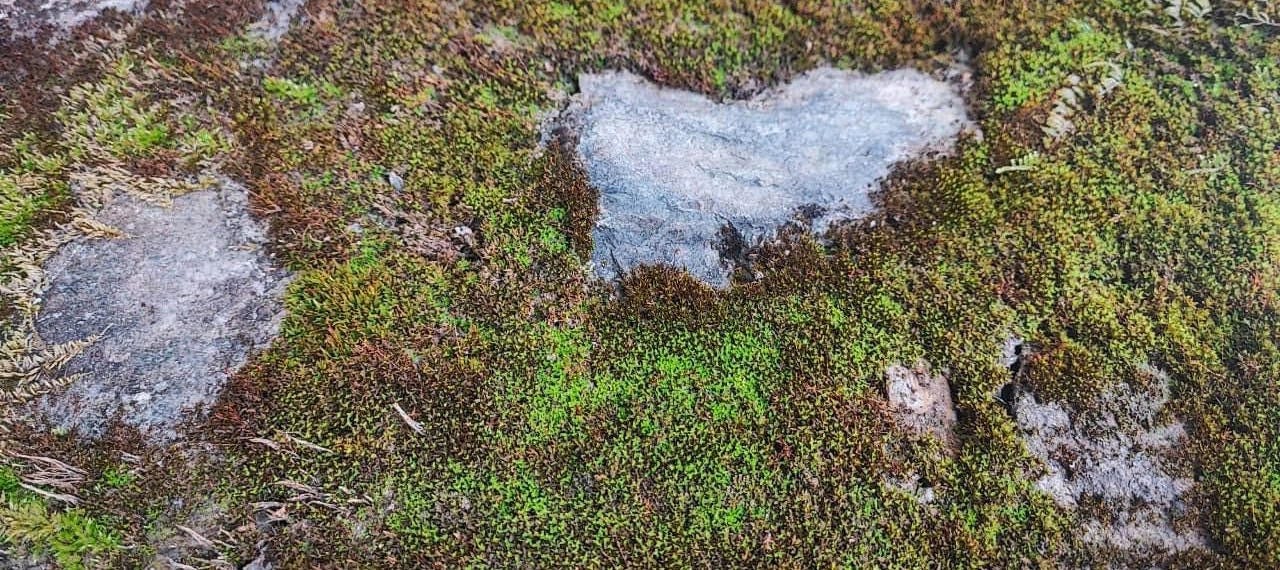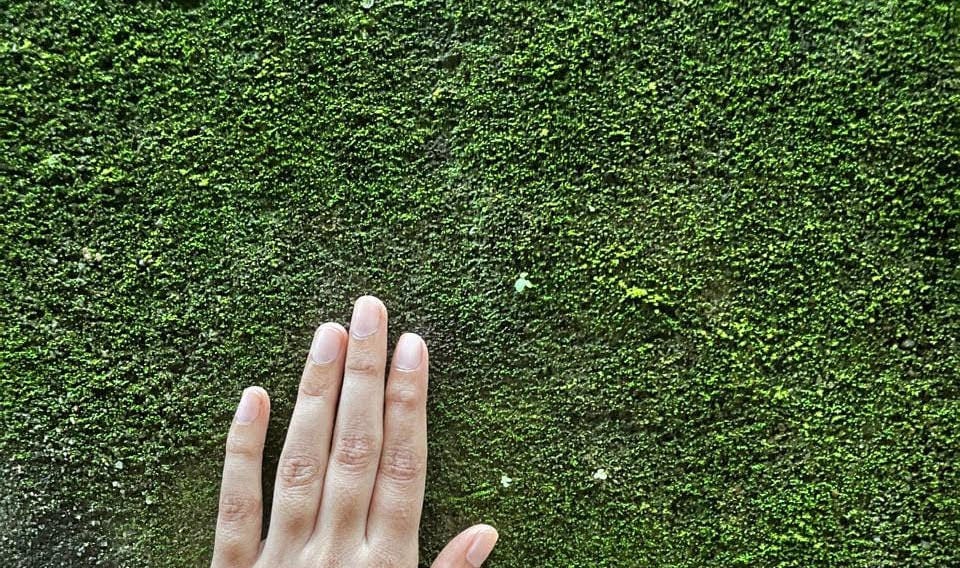Praani ki Kahani
Praani is our note on listening better to the voice of nature, ways of amplifying them, and finding pathways to bring them into our ways of governance. At Agami, we are deeply interested in how rivers, forests, animals, and even the winds and the stones, might speak into our deliberations on justice.
[This Note had originally gone out on October 21, 2025]
Offering For the Week
Moss, Time and the Gentle Texture of Justice
Earlier this year, I attended the the Agamishaala at Naukuchiatal as part of a lively cohort, each of us at a different bend in our journeys. On the first afternoon, I remember going for a walk and little did I know that many of the ideas forming through the warmth of our conversations, through osmosis almost, would manifest themselves right outside the Shaala Room.
I stood there, gazing at a thick patch of moss growing softly on an old stone ledge. Its surface felt like fine embroidery under sunlight, thin yet abundant.I stood before it and felt what Manish had named on day one — the grace of the aesthetic arrest. Think of it like a pause that invites sensing before understanding, before making sense.
I began to think about how often a human group, whether a party, a classroom, or a courtroom, grows thick around its edges and turns closed, The social body hardens. At times, the social skin of many of our justice systems look like this too, with their codes, corridors, and files settling into a stiffness that keeps many at the door. The moss had no such guard. Its skin was thin and welcoming, soft at first touch, then textured as the fingers stayed. The everyday felt sacred for a moment, and the moss felt like a teacher for a multi-being world.
Moss Justice
Much of the Shaala invites us to name, embody, and work through our stuckness, to grapple with discomforting but verifiable data that rises through deep, transversal emotions. Over those days the moss kept summoning me back to its rigor, its beauty, and its open invitation. I live in Kolkata, but most cities have embraced a uniform topography of concrete, sand and asphalt. I love nature, yet I realised I may not be touching it enough.
Kolkata like most Indian cities is full of moss. Its ordinary abundance is on trees, pavements, walls but it is also wild and unintended, very uncitylike. It asked me to step past the appropriate hygiene of nature that cities curate, the trimmed gardens, the manicured slightly lifted pavements, the polished stone. Could this turn also ask something of justice? The appropriate hygiene of justice, with its heavy formality and its ease with certain fluent insiders, can keep out those who cannot move that way. The more-than-human lives who share our places rarely fit this polish. They do not crack the etiquette of our buildings and procedures. Moss, unconcerned with order, invites the outsider in simply by growing everywhere.
Thinking, Sensing, Being
Much of the work we do in justice and social change begins with systems thinking, with mapping connections and understanding how parts relate to wholes. The Shaala, however, invited me to move through systems thinking toward something more intimate: systems sensing. This meant learning to feel the textures and temperatures of a system, to notice what it asks of us before we act. And beyond that lay what might be a lifelong practice, one the Shaala called systems being — where we recognise ourselves not as separate observers but as part of the living fabric we hope to shift.
In that slower register, the moss outside the room became a teacher with three small instructions. It grows everywhere, a non-vascular plant that spreads with humility across rich stone and poor plaster alike, and it treats every surface as a place to hold. It takes its own many years — measured in earth time — to flourish, holding memories of water, air, and stone together. When touched, it gives nothing and takes nothing, leaving the hand unchanged yet somehow instructed. Perhaps justice that listens closely must learn this kind of humility. If we let it, it shows how a social body, including a legal one, can be thinner at the edge, more porous, and more welcoming to the many lives already moving through it.








